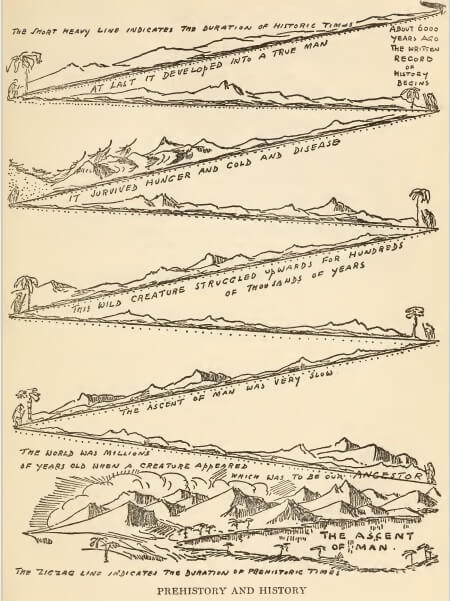 The Story of Mankind Part I
The Story of Mankind
The Story of Mankind Part I
The Story of Mankind



 The Story of Mankind Part I
The Story of Mankind
The Story of Mankind Part I
The Story of Mankind

Study the lesson for one week.
Over the week:
Activity 1: Narrate the Lesson
Activity 2: Act Out the Chapter
Gather as many of the following props as you wish to act out the story:
Instructors - read the following to the children and help them act out each line.
Activity 3: Complete Copywork, Narration, and Dictation

Click the crayon above. Complete page 7 of 'World History Copywork, Narration, Dictation, and Art for Third Grade.'
Activity 4: Draw Early Humans Before the Stone Age

Click the crayon above. Read the below instructions and complete page 8 of 'World History Copywork, Narration, Dictation, and Art for Third Grade.'
Use pencils, crayons, pastels, or markers and the following description from the chapter to draw your own pictures of pre-Stone Age people.